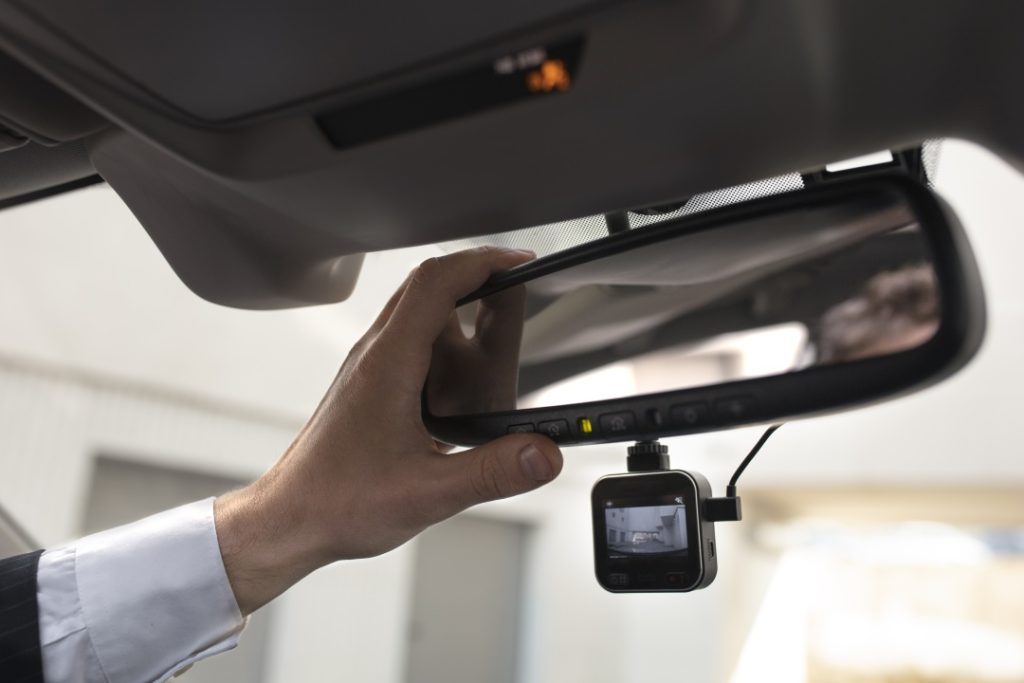The surprising history of dashcams dates back to 1903. Ohio filmmaker William Harbeck created what we’d call the first dashcam footage by mounting a hand-crank camera on a streetcar. This trailblazing moment happened decades before dashcams became common safety tools.
Dash cameras have evolved dramatically from their humble beginnings to become the devices we know today. Police vehicles started using them in the 1960s to curb traffic violations. Regular consumers embraced these devices in the early 2000s, especially when you have countries like Japan and Russia dealing with road safety concerns and high accident rates. Russian vehicles had made dashcams practically standard equipment by the early 2010s.
Modern dashcams are nowhere near those early hand-crank cameras. These sophisticated tools now help in reporting car accidents, reduce risky driving behavior by 35% and help recover 90% of stolen vehicles within 24 hours. Latest models come packed with impressive features like 4K resolution, GPS tracking, and driver assistance alerts.
Why Dashcams Were Invented
Dashcams first appeared with a simple goal – to be unbiased witnesses on the road. People had tried mounting cameras on vehicles before, but dashcams as we know them today started taking shape in the 1930s. H.C. Fairchild from Washington DC created the first “windshield camera” – a three-camera system that helped police officers catch traffic violators with time and date stamps.
Police departments played a vital role in making dashcams what they are today. California Highway Patrol Officer R.H. Galbraith took the initiative in 1939. He mounted his personal motion-picture camera on his patrol car’s dashboard to record traffic violations for court evidence. The technology picked up steam in the 1960s when Connecticut State Police started using video footage to tackle dangerous driving.
The 1980s changed everything. Modern dashcams began their rise in Texas and quickly caught on. The technology became more available as self-contained Beta audio/visual recording systems transformed the recording industry. VHS recorders and 8mm camcorders soon followed. That same year, Mothers Against Drunk Drivers (MADD) formed and raised awareness about drunk driving. This prompted police to install cameras that documented both initial stops and field sobriety tests.
Russian drivers turned dashcams into a global phenomenon. These devices became common in Russia as drivers needed protection against police corruption and insurance fraud. Dashcams were so popular there that they captured the February 2013 Chelyabinsk meteor from many different angles.
The year 1999 brought new challenges as racial profiling allegations against U.S. police agencies showed why objective recording devices were needed. The Department of Justice saw how dashcams could help with officer safety issues and racial profiling claims while building public trust.
Early dashcams had many drawbacks compared to today’s versions. These bulky devices sat on tripods on front or rear windows instead of dashboards. They used VHS cassettes which made storing and transferring footage a lengthy process. The video quality was also poor.
How Dashcams Became Mainstream
Dashcams went from being niche gadgets to must-have car accessories during the 2010s. The numbers tell an interesting story: the global dashcam market was worth USD 4.00 billion in 2022 and is expected to reach USD 12.00 billion by 2033. This growth shows how quickly people have embraced these devices.
People started using dashcams mainly to prevent insurance fraud. The FBI estimates that non-healthcare insurance fraud costs approximately USD 40 billion annually, which adds USD 400-700 to the insurance costs of every American family. Now, 10% to 18% of U.S. drivers use dashboard cameras, and this number will grow by a lot.
Social media has played a significant role in popularizing dashcams. Videos showing everything from meteors in Russian skies to attempted insurance scams got millions of views. Take Asphia Natasha from Queens – her dashcam caught an apparent “swoop and squat” insurance scam that went viral with over 67 million TikTok views.
Young people lead the way in using dashcams:
- 20% of Millennials own dashcams
- 19% of Gen Z already have dashcams
- One-third of Gen Z have thought about buying one
Insurance companies were skeptical at first but now welcome dashcam technology. Many offer up to 15% off on policies for cars with dashcams. Yes, it is working – 20% of dashcam owners say their footage helped with insurance claims, while 12% used their recordings in legal cases.
Several things keep pushing dashcams into the mainstream. They’re affordable now, people care more about road safety, and traffic incidents keep rising. The National Insurance Crime Bureau reports that staged accidents happen more often in urban areas and wealthy neighborhoods, with scammers targeting women driving alone and senior citizens. Studies in New York show dashcams cut fraudulent insurance claims by 25%, proving they’re more than just cool gadgets.
What Today’s Dashcams Can Do
Modern dashcams are nowhere near as simple as basic recording devices – they’ve become sophisticated monitoring systems. The capabilities of these devices have grown beyond what early inventors could have imagined.
Today’s dashcams come with crystal-clear 4K Ultra HD resolution. Users can capture license plates and other significant details even in poor lighting. This is a huge improvement from the grainy footage of early models.
Storage has grown dramatically too. Contemporary models offer loop recording that overwrites old footage when memory is full. This eliminates manual file management hassles. Many units now include built-in GPS to stamp footage with location data and vehicle speed. These details are vital for insurance claims and legal cases.
AI-powered features in premium models are maybe even more impressive. They include:
- Lane departure warnings that alert drivers when they drift from their lane
- Forward collision warnings that provide advance notice of potential impacts
- Driver fatigue monitoring that detects signs of drowsiness
Parking mode is another most important advancement. It activates when the vehicle is stationary to protect against hit-and-runs and vandalism. So many insurers now offer premium discounts for vehicles with these protective devices.
Wi-Fi and Bluetooth connectivity options let users share footage instantly through smartphone apps. This quick access is a great way to preserve evidence after accidents.
Cloud storage integration is the latest innovation. Footage uploads to secure servers, which will give you a backup even if the device gets damaged or stolen.
These technological improvements have turned dashcams from simple recorders into complete driving assistants. They now provide both documentation and active safety features – quite a leap from where they started.
Conclusion
Dashcams have evolved dramatically since William Harbeck’s hand-crank camera experiment in 1903. These devices began as bulky VHS systems used by law enforcement and evolved into sleek, feature-rich tools accessible to everyday drivers. Their development showcases technological progress and our growing need for security and evidence on the road.
The market numbers paint an impressive picture. From $4 billion in 2022, dashcam sales are expected to reach $12 billion by 2033. This growth makes sense – dashcams cut dangerous driving by 35% and help police find 90% of stolen vehicles within 24 hours. Young drivers lead this trend as they see real benefits beyond the cool factor.
Insurance providers offer up to 15% discounts to drivers who use dashcams. These devices proved their worth in New York by cutting fraudulent claims by 25%. The benefits go beyond protecting individual drivers to making roads safer for everyone.
Today’s dashcams bear little resemblance to their predecessors. They pack 4K resolution, GPS tracking, AI alerts, and cloud connectivity to work as detailed driving assistants. New features, such as parking protection and quick video sharing, add security layers that early inventors couldn’t have dreamed of.
The basic purpose stays the same – dashcams act as neutral witnesses on our busy roads. New technology will bring more features, but the value of having an objective record will keep dashcams essential for years to come. A truth captured through an unblinking lens gives peace of mind that no other technology can match.
Caroline is doing her graduation in IT from the University of South California but keens to work as a freelance blogger. She loves to write on the latest information about IoT, technology, and business. She has innovative ideas and shares her experience with her readers.






